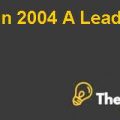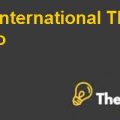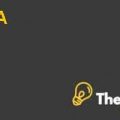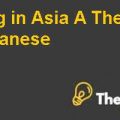
1. What are the most important changes occurring in the private equity industry?
Two most important changes have occurred in private equity industry. First was the scale on which private equity groups operated. These concerns were particularly critical on the buyout side, where multibillion-dollar funds had become the norm that these groups would pursue low-risk, low-return transactions in order to ensure their ability to raise a follow-on fund rather than following innovative strategies that had the potential of generating higher returns. It has been considered that many of the LBO firms have explicitly lowered their return hurdles in order to compete for transactions, particularly at the larger end of the market, pricing deals to yield returns in the mid-to-high teens.
Yale usually found itself progressively uncomfortable with the size of the funds being raised because numbers of private equity groups were considering themselves as asset managers i.e; raising absolute-return, venture capital, mezzanine, and real estate funds in addition to their core buyout funds. Further, another concern was about the substantial amount of undeployed capital in buyout funds because this would not only inflate the deal valuations and reduce returns but it might also fail firms to eke out an existence.
The second major change was related to the new classes of investors active in the industry. Although, fund raising had declined due to the financial crises in 2008, but many groups with attractive track records could still raise substantial funds quickly. As a result, arranging capital could be challenging.
2. What has Yale learned from the financial crisis of 2008?
The financial crisis in 2008 tends the university to learn about the importance of liquidity in managing the operations of the university and how can it be managed effectively so as to avoid any worthwhile opportunity.
In order to respond the need to generate liquidity to support hedging activities, the endowment developed a number of non-disruptive sources of liquidity where they include the use of bonds as collateral for short-term loans, which is known as reverse repurchase agreements. In order to use equities as collateral for short-term loans, which is known as security lending agreements.
Further, the forecasted model helped the university to avoid any panicking situation that arose when all commitments had been called at once. Further, the Investments Office had also adopted a number of new strategies where they target the share of illiquid assets, almost 50% of the portfolio. No doubt, this was a very huge percentage and would tend the organization to report slightly lower rates of return but also lower volatility than would otherwise be the case.
- 3. Should Yale maintain, increase or decrease its allocation to private equity? Describe the method that you used.
Yale should maintain or increase the allocation to the private equity just because of four reasons. The first reason is due to the historical success that Yale had enjoyed from these investments, since its inception so the organization shall consider to go with the same strategy in order to achieve the same steady growth in future.
The second factor is the relation with managers; the university has almost 40 years of investing relationship with its managers. Yale has developed strong relationships with key managers and the university continuously believes that the private equity managers will produce superior performance even in a difficult environment. This has already been justified from the past where the university reported great returns from its peers.
The third factor is the Yale’s deep understanding of the private equity process that helped them to manage investments in more sophisticated ways. One example was its ability to hedge its positions. Yale carefully tracked the ability of private equity firms in which it invested. When it believed that it was excessively exposed to any particular publicly traded firm, then it sought to hedge that exposure through short sales and derivatives. Short sales and put options would generate off-setting profits if the share price declined, which woulf help the university to reduce the danger of wiping out the gains of private equity investments.
Finally, there were important benefits of being in private equity market at all times because if Yale decided not to invest with a top-tier firm merely because the market was overheated, then it might not be able to persuade the organization to include it when market conditions were more favorable..............................
This is just a sample partial case solution. Please place the order on the website to order your own originally done case solution.













